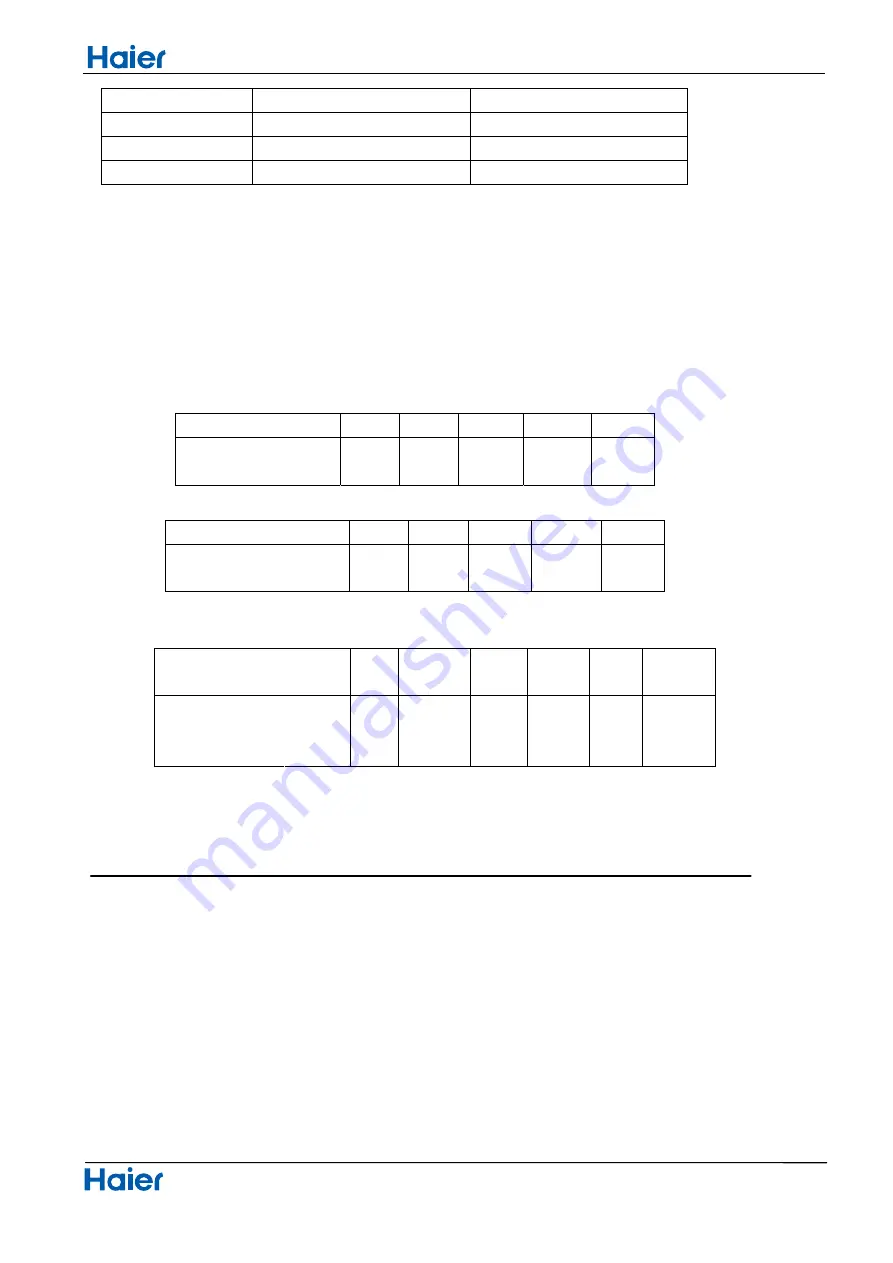
Functions and control
Domestic air conditioner
1
8
Z
H
4
7
2
z
h
_
x
a
M
2
3
<
c
_
h
W
2
3
Wh_c
40
Max_hz3
90 HZ
Remarks: the above are not only the maximum frequency limitations of the complete appliance which are
affected by the environment, but also the maximum ability limitation of the system. When the starting ability is
not the maximum, its maximum frequency limitation is calculated by the following equations:
The frequency limitation which is affected by the temperature and under the condition of actual ability
˙
the
actural running system ability*the maximum frequency which is limited by the temperature and under the
condition of maximum ability/the maximum designing ability of the system
T=
ě˄
Ti*Pi
˅
/
ě
Pi
(
Ti=|Tst_i-Tnh_i the indoor environment temperature| ;Pi
˙
i the ability of the
indoor unit)
Refrigeration/dehumidification:
Heating mode
˖
K=
ě
Ki/the number of running machines
The calculation of the actual output frequency: when there is no healthy airflow: F =F-ED-*
×
P
×
K
When the healthy airflow has been set: F =F-ED-*
×
P
×
K
˄
airflow speed
˅h
K
˄
healthy airflow
˅
When refrigerating, it is needed to satisfy
ˢˉ˩
IN
ˉ̀
< F<
ˢˉ˩˝˴ˉ̀
When heating, it is needed to satisfy
ˢˉ˩
IN
ˉ
r< F<
ˢˉ˩˝˴ˉ
r
7.1.2
˖
The outdoor fan control (exchange fan)
When the fan is changed among every airflow speed (including stop blowing), in order to avoid the airflow
speed from skipping frequently, it must be kept under each mode for over 30 seconds, and then it can be
changed to another mode (when refrigerating, the time is changed to 15 seconds).
7.1.2.1
˖
The outdoor fan control when refrigerating or dehumidifying
T
<1
˙
1
˙
2
˙
3
4
The percentage of the
rated frequency P
70%
80%
85%
90%
100%
T
<1
˙
1
˙
2
˙
3
4
The percentage of the
rated frequency P
70%
80%
85%
90%
100%
The indoor set airflow
speed
Low
Medium
High
Strong
Quiet
Healthy
airflow
The percentage of the
rated frequency Ki
80%
90%
100%
110%
70%
65%
Z
H
8
6
4
z
h
_
x
a
M
8
4
<
c
_
h
W
4
5
Wh_c
48
Max_hz5
60 HZ
















































